¿Que te apetece leer?

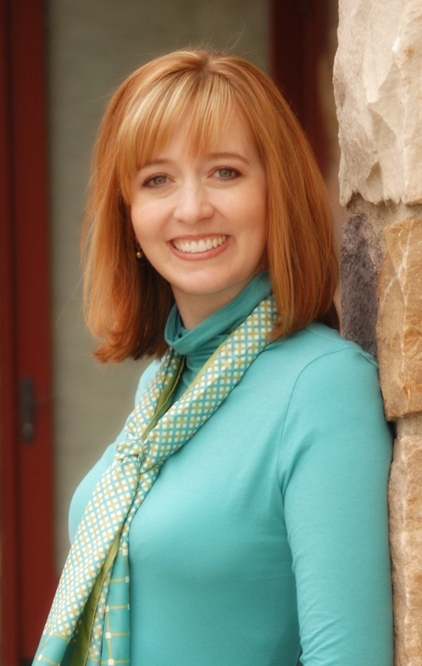 The Goose Girl, Maid Maleen, Rapunzel… Do you plan to retell any other fairy tale? Why did you choose those?
The Goose Girl, Maid Maleen, Rapunzel… Do you plan to retell any other fairy tale? Why did you choose those?
I actually choose to retell the fairy tales that bother me the most, the ones that compel me and make me ask questions. For example, with Book of a Thousand Days, I was bothered that the original tale neglected the maid’s story, so I wanted the book from her point-of-view. And there were so many unanswered questions in the tale of the goose girl, I couldn’t wait to dig in and find out as much as I could!
In the past few years, many authors have published books inspired by fairy tales. In your opinion, what is the key to a good adaptation?
I think the job of a retelling is answering questions. It’s not enough to just make the tale longer. The writer needs to get inside the tale, understand it, and create a fully realized world where the tale makes sense.
Are you going to write a companion to Book of a Thousand Days, as you did with The Goose Girl?
I love the world of Book of a Thousand Days and have thought of other stories in that land, but I’m not currently writing one. Perhaps some day!
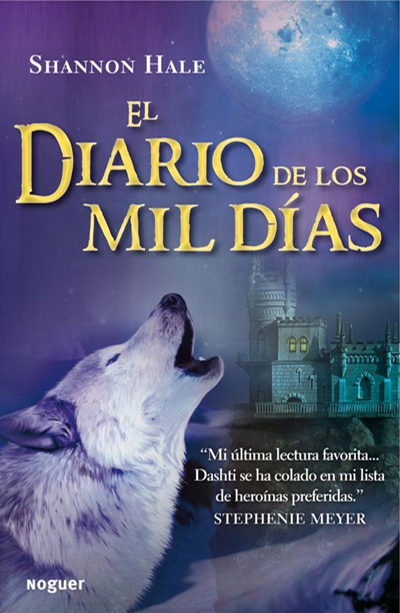 Book of a Thousand Days seems to be the story of a lady and her mistress who are shut in a tower, but there’s much more besides that. What did appeal to you about this part of the story (the days in the tower) which was skipped in the original tale?
Book of a Thousand Days seems to be the story of a lady and her mistress who are shut in a tower, but there’s much more besides that. What did appeal to you about this part of the story (the days in the tower) which was skipped in the original tale?
For me, a story is about characters. Dashti and her mistress both change over the course of the book, and I wanted to show as much of the tower as I needed to understand where those characters began and where they ended up. It was risky starting a book is such a closed environment, the two main characters locked in a tower for years. You don’t want to make the readers feel claustrophobic. But I was fascinated by that circumstance, what was it about the maid that would choose that fate in order to stay with her mistress, and what did the lady know of Lord Khasar that she would choose the dark of the tower rather than marry him.
Book of a Thousand Days is a very good title. Do you choose the titles of your books or is it your publisher decision? Have any of your books had a different title in your first drafts?
Thank you! I choose the titles. The original title was Diary of a Lady’s Maid, but it was sort of bland, and my husband actually thought of Book of a Thousand Days. River Secrets (the third book in the Goose Girl series) was originally City of Rivers, but the others retain their original names.
Which authors (or books) would you list as influence in your work?
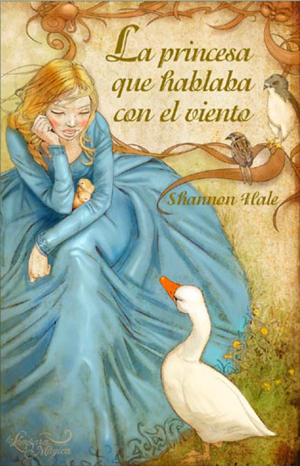 I read so many different books and authors, and I think they all must influence me in some way. As a child, my favorite authors were Robin McKinley, Lloyd Alexander, Joan Aiken, Patricia McKillip, and Anne McCaffery. I think what we read as children creates the blueprint of our imaginations, and so as a writer, those childhood favorites are very important.
I read so many different books and authors, and I think they all must influence me in some way. As a child, my favorite authors were Robin McKinley, Lloyd Alexander, Joan Aiken, Patricia McKillip, and Anne McCaffery. I think what we read as children creates the blueprint of our imaginations, and so as a writer, those childhood favorites are very important.
In your YA books the main character is usually a girl with a strong personality. Do you think characters set an example for young readers? Do you try to instill some values in your books?
I don’t set out to teach values or morals in my books. I think the reader is better at doing that than the author. I try to write realistic characters and to live a genuine, honest life and hope that good seeps through naturally. In my experience, girls are strong, powerful, clever, and interesting, so I think my characters tend to be.
Your YA books are settled in a world similar to ours in the Middle Age, as in the fairy tales, and have a little magic. Is there a reason why you usually write fantasy?
Fantasy was my favorite genre as a child, and I’ve always sought to write books that I would have loved when I was younger and would still love now. The fairy tale setting is so useful for an author. We can send readers there for the length of the tale, a place where it’s safe to confront danger and hard choices, and then return to the real world changed. It’s exciting stuff, and also, I think, very helpful. Teens have lots of rough choices to make every day. Reading these kinds of books allows them to think with the characters and learn more about themselves.
What can you tell us about Daisy Danger Brown?
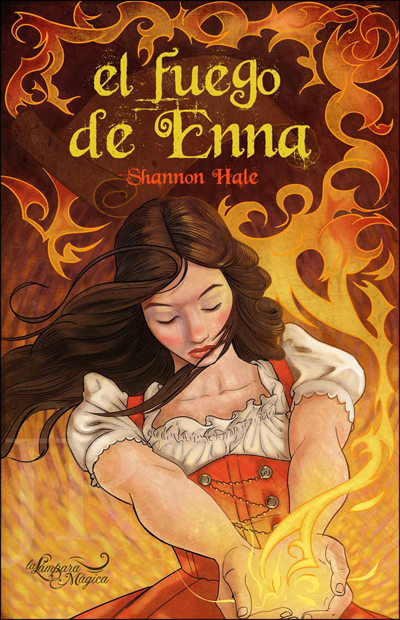
I spent a year writing the first draft of the trilogy and then realized it wasn’t going where I wanted. So I took a break from it to write another book and I hope to return to it fresh! It’s my first book for teens with a contemporary setting and is a superhero science fiction adventure.
We’ve read in your website that you wrote many drafts of The Goose Girl before getting to publish it. Have you written as many drafts of your other books? Which is the most important lesson you’ve learned in all these years?
I wrote about 30 drafts of The Goose Girl (at least 50 drafts of the first chapter). I do about 12 drafts of my books now. What I’ve learned is to make the big changes as soon as I realize I need them, cut scenes and chapters and characters, whatever the story needs. I used to be more timid in my rewrites, which is why it took me longer. Now I’m more brutal and so need fewer drafts. But I still rewrite extensively. My first drafts are always ugly.
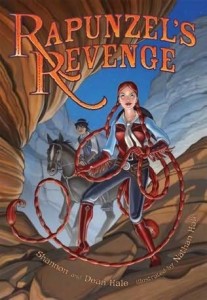 You have written Rapunzel’s Revenge and Calamity Jack with your husband. Which advantages and disadvantages do you find in writing with somebody else? What are the main differences between writing a comic and a novel?
You have written Rapunzel’s Revenge and Calamity Jack with your husband. Which advantages and disadvantages do you find in writing with somebody else? What are the main differences between writing a comic and a novel?
It always takes longer to collaborate than to work alone. The benefit is the fun of working with someone I love and respect as well as a story that I wouldn’t have come up with on my own. Writing a comic is a lot like writing a screenplay. We write the dialog and a description of the action then turn it over to the illustrator, who plays the part of the actors, set designer, etc. I love the process and am so pleased with these books, I would love to do it again. But only with my husband. He lets me be bossy and loves me anyway.
Thanks for the interview! I’m so pleased some of my books have been translated into Spanish. Spanish is my second language and is close to my heart. I’ve lived for a time in Mexico and Paraguay and hope to visit Spain one day. Barcelona is the home of my beloved aunt and cousin. Cheers!











